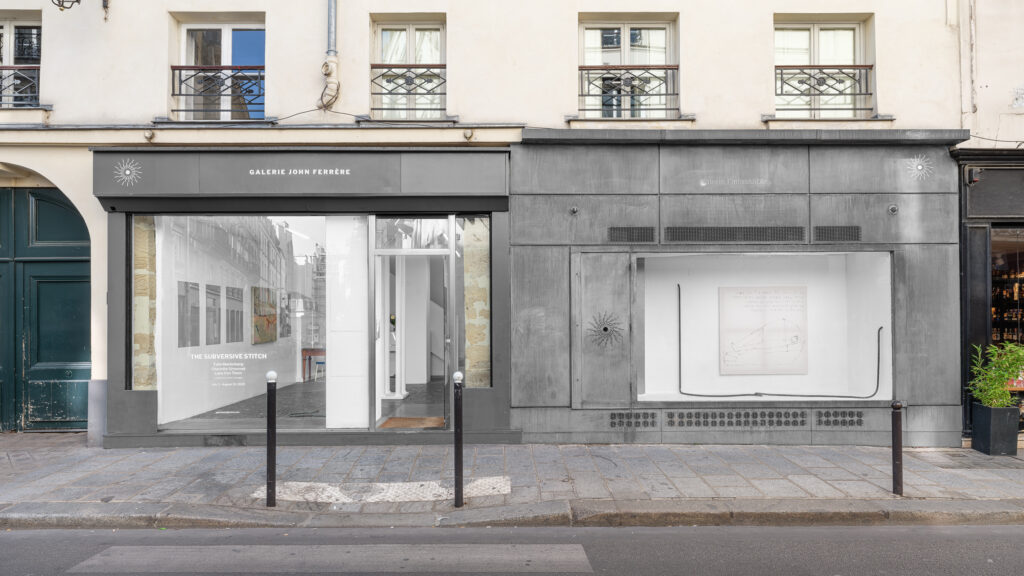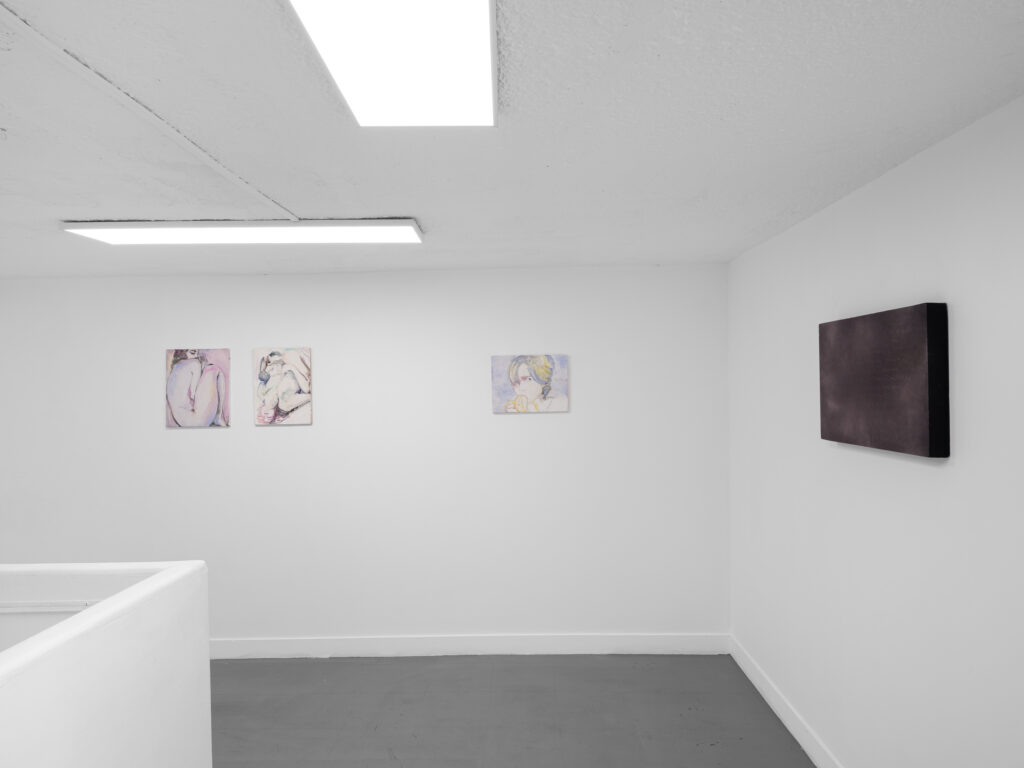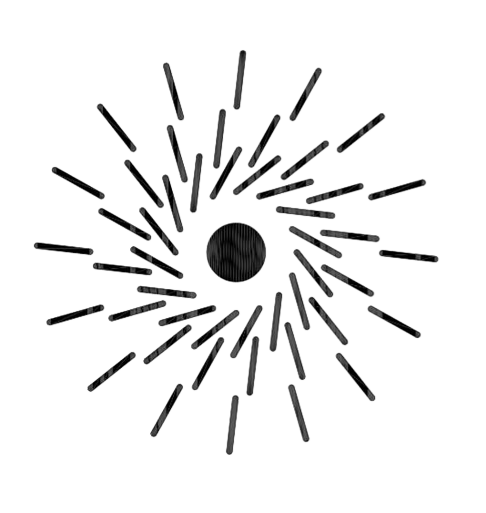Talia Maidenberg, Charlotte Simonnet, Lana Von Thorn
curated by Emma O’Quigley
July 3 — August 15, 2025

The Subversive Stitch, exhibition view · © Grégory Copitet

The Subversive Stitch, exhibition view · © Grégory Copitet

The Subversive Stitch, exhibition view · © Grégory Copitet
Inspirée par l’étymologie du mot texte, issu du latin textus (tissu, trame) et du verbe texere (tisser), l’exposition The Subversive Stitch interroge la manière dont les gestes de tissage, de couture ou de superposition deviennent un langage plastique. Tisser, écrire, construire : autant d’actes matériels et symboliques qui relient le corps, l’espace et la mémoire. Le titre de l’exposition, emprunté à l’essai de Rozsika Parker, fait écho à une réflexion sur le textile comme espace de résistance, de réappropriation et de narration, souvent invisibilisé ou relégué aux sphères dites mineures de l’art ou du domestique.
À travers des pratiques sculpturales, picturales et installatives, les trois artistes réunies dans l’exposition explorent les zones de friction entre la rigidité et la souplesse, l’intérieur et l’extérieur, le visible et l’invisible. Elles proposent des œuvres comme autant de tissus où s’entrelacent matériaux industriels, gestes et récits fragmentés.
The Subversive Stitch met en lumière des pratiques où le geste de tisser qu’il soit sculptural, spatial ou pictural devient une stratégie de subversion. Les artistes y font dialoguer les corps, les matériaux et les récits dans un tissu commun, fragile et résistant, où la texture fait sens. Écrire, coudre, sculpter : autant de manières d’habiter le monde autrement, de déjouer ses structures oppressives et de proposer d’autres manières d’y circuler.
·
Inspired by the etymology of the word « text », derived from the Latin textus (fabric, weave) and the verb texere (to weave), the exhibition The Subversive Stitch explores how acts of weaving, sewing, and layering become a visual language. To weave, to write, to build—these are material and symbolic acts that connect the body, space, and memory. The exhibition title, borrowed from Rozsika Parker’s essay, echoes a reflection on textiles as spaces of resistance, reappropriation, and narration—often rendered invisible or relegated to so-called minor or domestic art spheres.
Through sculptural, pictorial, and installation-based practices, the three artists featured in the exhibition explore the friction zones between rigidity and flexibility, interior and exterior, visible and invisible. They propose artworks as woven surfaces where industrial materials, gestures, and fragmented narratives intertwine.
The Subversive Stitch highlights practices where the act of weaving—be it sculptural, spatial, or pictorial—becomes a strategy of subversion. The artists engage bodies, materials, and stories in a shared fabric that is both fragile and resistant, where texture becomes meaning. To write, to sew, to sculpt: these are all ways of inhabiting the world differently, of unraveling oppressive structures, and proposing new ways to navigate through them.

